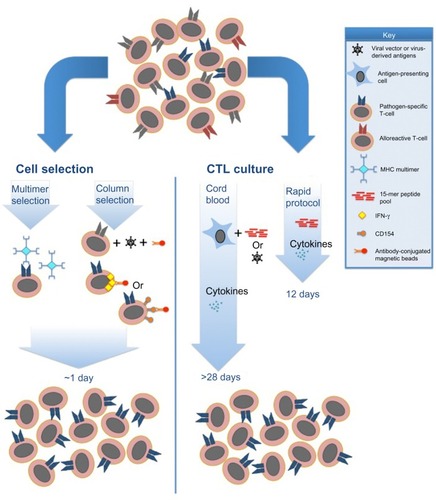Figures & data
Figure 1 Current Good Manufacturing Practice-compliant approaches for generation of antipathogen CTL products.
Abbreviations: CTL, cytotoxic T-lymphocyte; IFN, interferon.

Table 1 Previous clinical trials of pathogen-specific T-cell therapy
Table 2 Preclinical studies of novel antipathogen T-cell therapies
